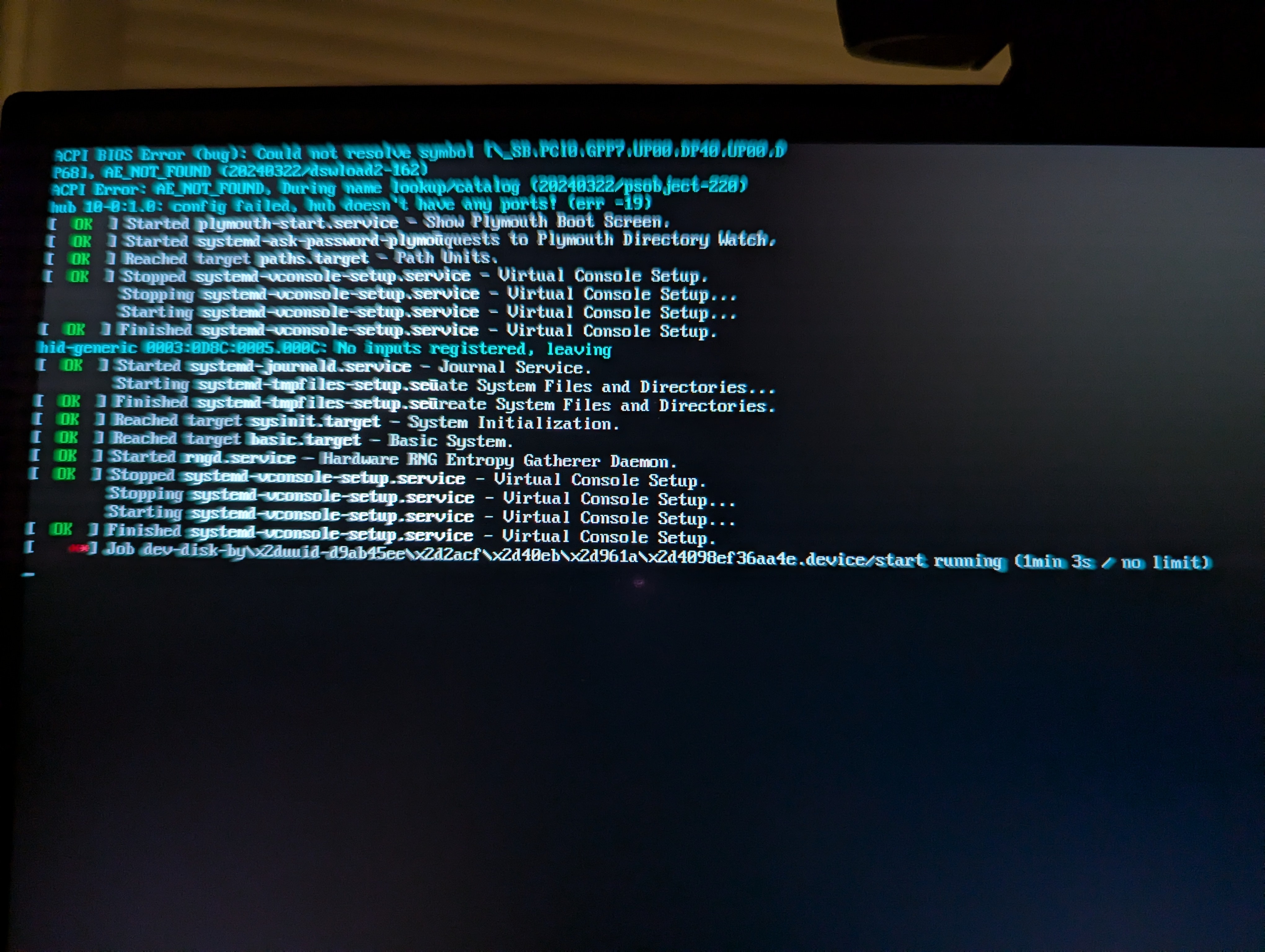Linux
Welcome to c/linux!
Welcome to our thriving Linux community! Whether you're a seasoned Linux enthusiast or just starting your journey, we're excited to have you here. Explore, learn, and collaborate with like-minded individuals who share a passion for open-source software and the endless possibilities it offers. Together, let's dive into the world of Linux and embrace the power of freedom, customization, and innovation. Enjoy your stay and feel free to join the vibrant discussions that await you!
Rules:
-
Stay on topic: Posts and discussions should be related to Linux, open source software, and related technologies.
-
Be respectful: Treat fellow community members with respect and courtesy.
-
Quality over quantity: Share informative and thought-provoking content.
-
No spam or self-promotion: Avoid excessive self-promotion or spamming.
-
No NSFW adult content
-
Follow general lemmy guidelines.
view the rest of the comments

I'm giving up on my dd attempt and trying clonezilla (a highly regarded option it seems).
But yeah, welcome to exactly what's driving me crazy. The dd "worked", grub loads, it starts loading Linux ... and then it gets caught trying to find... itself (?)
Like the exact drive that's missing is the drive it would have to find to even be partially operational. The other drives weren't touched and the original drive is unplugged.
There is a btrfs subvolume and they're both part of the same drive ... but it was also copied bit for bit.
IDK... We'll see whether clonezilla works. I've been using Linux over ten years, it's been a long time since I've been this confused.
I mean, if you want to start over, that's your call, but in all honesty, my guess is that all you have to change from your current situation is a line of text in fstab. I don't believe that changing the cloning method is going to change that.
EDIT: maybe the UUID is for a swap partition or similar in fstab?
EDIT2: This guy is describing a very similar sounding situation (though it's not clear if he unplugged his original drive before trying to use his cloned one, so might have had duplicate UUIDs).
https://unix.stackexchange.com/questions/751640/systemd-is-eternally-stuck-on-a-start-job-when-i-go-to-boot-from-my-cloned-to-nv
He thinks that some users have "fixed the problem" by creating a swap partition with gparted.
That would, I expect, generate a new UUID for the swap partition via calling
mkswapand then they're putting the UUID into their fstab.Just saying that I'd personally do that, confirm that the UUIDs listed in fstab conform to what
blkidis saying before starting all over, because I don't think that dd or another utility for copying disk contents will likely produce a different result.Clonezilla just worked. The fstab is unmodified/identical to what dd gave me.
I really have no idea what clonezilla did differently. Its output was so fast... But yeah, it just worked with that. So I guess I'll take it.
Absolutely baffling.
Clonezilla runs lots of tasks after (and before)
ddthat are in the log file(s) on the live environment before you reboot. I haven't used it in a while, but I'm confident that one of the tasks is updating grubI did update grub via a chroot as one of my troubleshooting steps... So I don't think that was it either. I actually recall it saying something about skipping updating grub (because it was a GPT system without some special flag set I think).
I remember seeing it do something to the EFI stuff explicitly and I'm wondering if maybe that's where it did something I didn't.
Aight, well, glad to hear it.
Thanks and thanks for the effort you put in.
Now that you know the safe way out, break it again with dd and figure out the difference 😁
Moving from SATA to NVMe is a classic way to break the boot process. Most of the time, you want to boot a recovery mode from USB, mount your existing root and efi partitions, and then just reinstall grub.
If you've managed to recover this way only once, you feel a lot more comfortable in the future if shit goes wrong.
I did do that FWIW, but it didn't do it/it wasn't enough/it still didn't work.
If this was a toy system and/or I was back in college and feeling adventurous, I would definitely be more inclined to try and figure out what happened. As it stands, I just want the thing to work 😅
Valid. Glad you're back on track